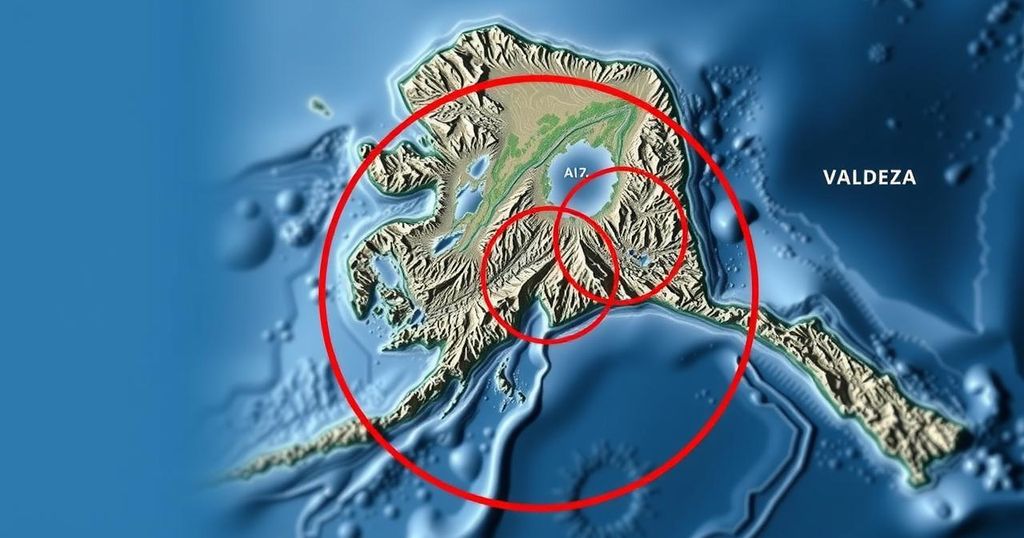A magnitude 1.7 earthquake struck 29 miles north of Valdez, Alaska, on November 27, 2024. The event, registered at a depth of 19 miles, has not been reviewed by a seismologist and is part of an area known for complex tectonic interactions affecting seismicity in southern Alaska.
On November 27, 2024, an earthquake with a magnitude of 1.7 occurred approximately 29 miles north of Valdez, Alaska, at 04:23:55 AKST. The quake was recorded at a depth of 19.0 miles (30 km) in an area known for complex seismic activity. The event has yet to undergo review by a seismologist and was situated 40 miles northwest of Thompson Pass and notable distances from several key geographic landmarks in Southcentral Alaska, including Anchorage and Fairbanks.
Southern Alaska is characterized by significant seismic activity due to diverse tectonic features. The region’s strongest earthquakes occur along the megathrust fault, which is the subduction zone of the Pacific and North American plates. Historical events, such as the 1964 Great Alaska Earthquake, exemplify the destructive potential of these forces. Additionally, intermediate-depth earthquakes are associated with the Wadati-Benioff Zone, indicating more profound tectonic interactions beneath the surface.
The earthquake near Valdez represents a minor yet important component of the active seismic landscape in Southern Alaska. Understanding the region’s tectonic setting is crucial for interpreting seismic events, as they are influenced by both shallow crustal and deeper subduction-related activity. Ongoing monitoring and analysis are vital for assessing future risks in this seismically active area.
Original Source: earthquake.alaska.edu






